Bewdley Bank Service Reservoir (2020)
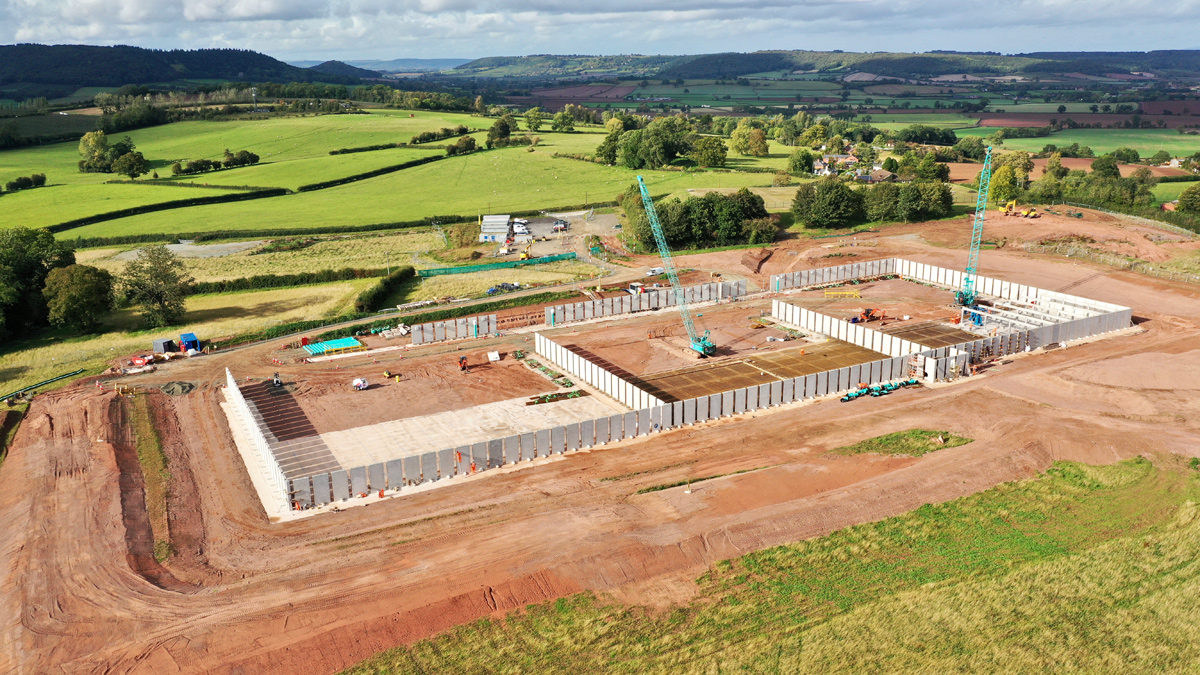
The new service reservoir under construction - Courtesy of MMB
The Hereford Water Network is dependent on a single source of supply from the River Wye and Dŵr Cymru Welsh Water identified a need to assess the resilience of the network to maintain customer supply during any future loss of source supply events. The resulting hydraulic assessment identified the requirement to increase the available storage across the network. The additional storage will increase the network’s ability to respond to fluctuations in demand and provide increased contingency and resilience in the event there is a loss of source supply from the water treatment works.
Project scope
Mott MacDonald Bentley (MMB) were tasked with the design and construction of the required additional treated water storage. This project involved a review of the existing storage network, the sites which were feasible to construct additional storage and the use of the client’s risk and value process to determine the best overall solution. The selected solution was for the construction of a 34 ML (operational capacity) service reservoir (SR) at the site of Bewdley Bank; next to the village of Burghill, Hereford. The site comprises of an existing 26 ML (operational capacity) service reservoir built between 1977-1980 and supplies Hereford and surrounding areas with potable water.
Bewdley Bank Service Reservoir – Key participants
- Client: Welsh Water
- Principal designer & contractor: MMB
- Semi precast concrete tank design & supply: FLI Carlow (now FLI Precast Solutions)
- Precast concrete roof planks: Stresslite Precast
- Formwork & reinforced concrete sub-contractor: DRND Formwork Specialists, Hereford
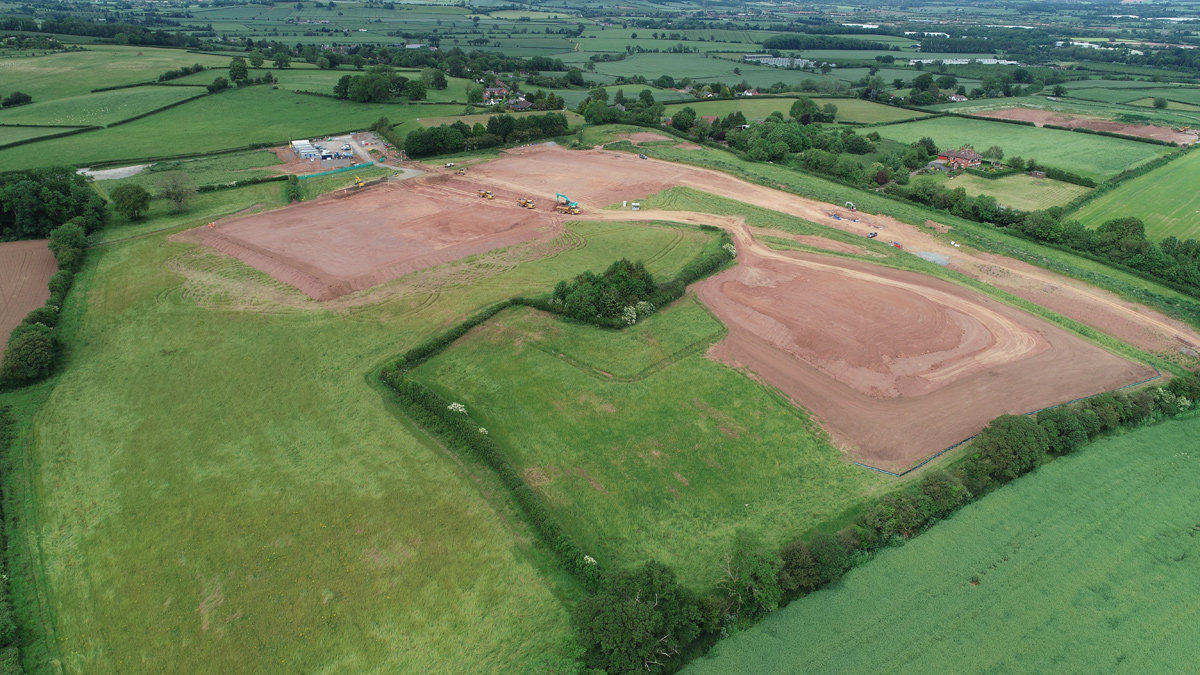
Excavation works in progress – Courtesy of MMB
Design strategy – procurement-based design
MMB utilised a delivery strategy of ‘procurement-based design’ to drive efficiencies throughout the design and construction process. This approach follows a sequence of:
- Determine the need: What is the root cause of the problem and what do we need to build to solve it?
- Engage the supply chain early: Find out what is readily available and what are the limits within the supply chain? Identify areas suitable for the use of new innovative products.
- Complete the design: Undertake the detailed design to accommodate the products available on the market.
Benefits of procurement-based design
Design efficiencies
- Faster process; 3D models built using standard units.
- Early supplier engagement in design, eliminating the risk of redesign following procurement.
Maximising value from the supply chain
- Allows for early design input from the suppliers who are typically experts in their products.
- Informs the design team what is readily available on the market.
Procurement savings
- Less time obtaining prices.
- Standard products remove the need for more expensive bespoke items.
Construction efficiencies with precast system
- The workforce is more familiar with components.
- Standard units are produced in advance and called off as required.
- DfMA reduces hazardous site activities and improves quality as the units are manufactured within a controlled environment.
Semi-precast concrete service reservoir product
MMB have worked on 40+ SR projects from AMP4 to AMP6 and have developed a standard product for semi-precast service reservoirs. Bewdley Bank uses this and benefits from best practice guides and lessons learnt from previous schemes, to further hone the process and drive further efficiencies.
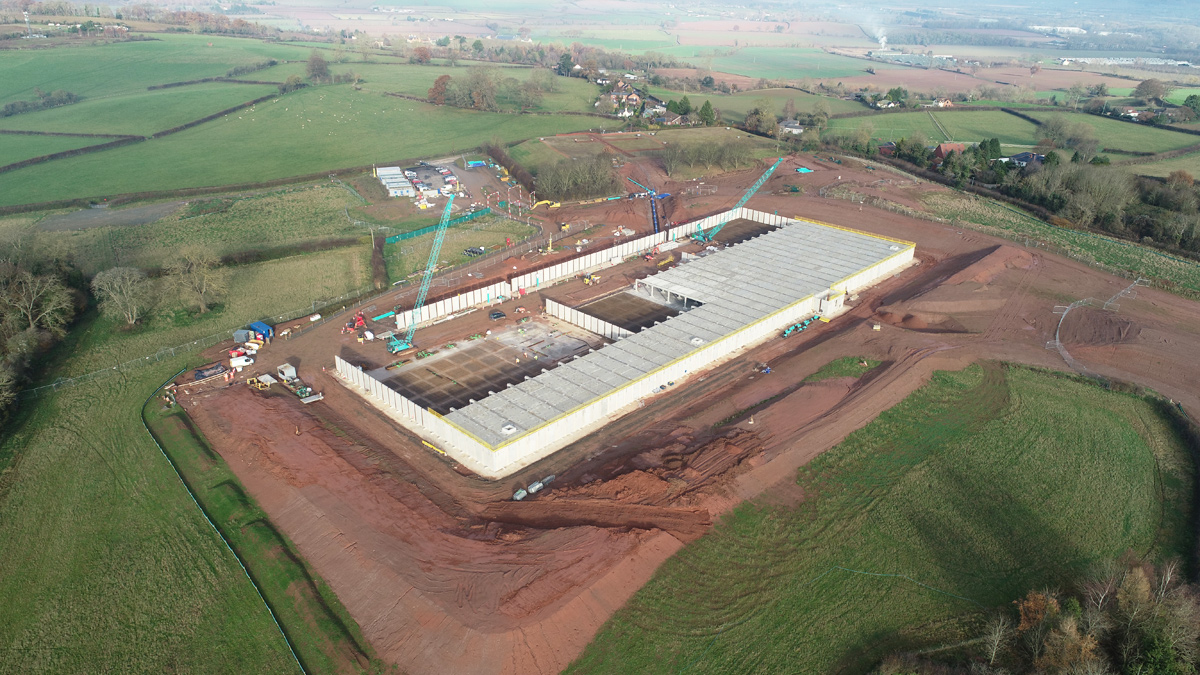
Progress at Bewdley Bank Service Reservoir – Courtesy of MMB
Benefits of semi-precast service reservoir product construction
Construction programme efficiency
- Precast elements can be installed at a much greater rate than traditional in situ construction. The site team were able to install up to 24 precast wall panels in one day, equating to 58m length.
- Phasing of the works across the three reservoir cells to give maximum efficiency of the plant and labour on site. The works were programmed to have precast units installed in one cell, whilst pouring concrete in another and fixing the reinforcement steel in the third.
- This led to a reduction in the overall construction programme.
Off-site production of precast elements
- Many of the precast units were produced ahead of time meaning the delivery schedule could easily adapt to accelerations/decelerations of the programme. Units were ‘called off’ as required which avoid the need for any double handling of units and no standing down time whilst waiting for deliveries.
- An increased finish quality to the precast units as they were manufactured in controlled factory conditions.
- Couplings were precast into the wall units at the locations of the inlet and outlet pipe connections. This reduced the risk of leakage occurrence at these locations and eliminated the need for in situ ‘box-out’ concrete pours. This also provided an acceleration to the on-site construction programme.
Improved construction safety
- Reduced the amount of low risk/high frequency activities; of which there are many associated with traditional in situ concrete works.
- Less temporary works and no requirement for large complex concrete formwork arrangements.
- Reduction in time spent working at height.
Digital innovation
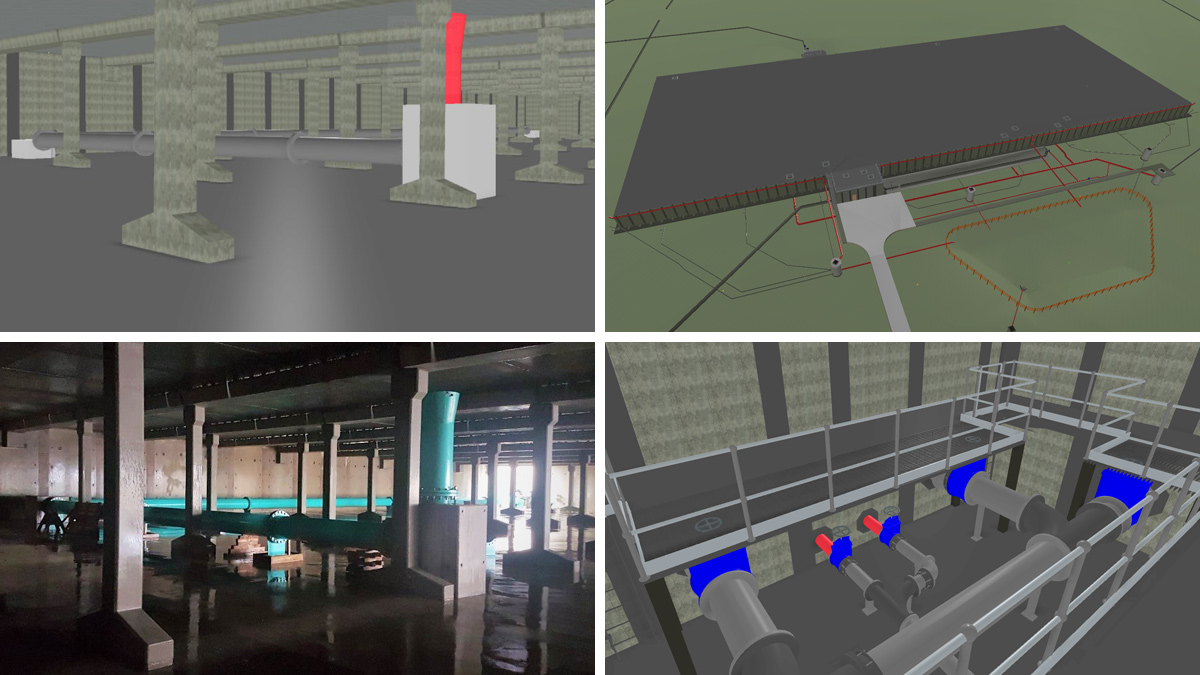
(top left) inlet pipework Revizto extract and (bottom left) construction photograph, (top right) extract of the reservoir structure from Revizto model and (bottom right) extract of the outlet valve house from the Revizto model – All images courtesy of MMB
Bewdley Bank was the first project on MMB’s Welsh Water framework to utilise the 3D software ‘Revizto’ which allows the user to move through the 3D design model. The user can click on points to check the elevation, measure distances between items and view the structure from all angles. This was used in meetings with Welsh Water Operations. It proved particularly useful during the Access, Lifting and Maintenance Review by allowing the site operatives to view the valve house proposals and input into the final design to ensure the final design was best suited for its everyday use.
Earthworks
The new and existing SRs are to be hydraulically linked, therefore the operational top and bottom water levels in both structures must equal each other. This was a key constraint when selecting the location of the new SR and influenced the volume of excavation required during construction. The design team considered five potential positions and compared the volume of excavation required against the space available to reuse the excavated material on site. The design calculated >45,000m3 of excavated material would be produced and the chosen location allows for all this material to be reused on site. This eliminates the need for hundreds of vehicle movements in the surrounding area to remove the material from site.
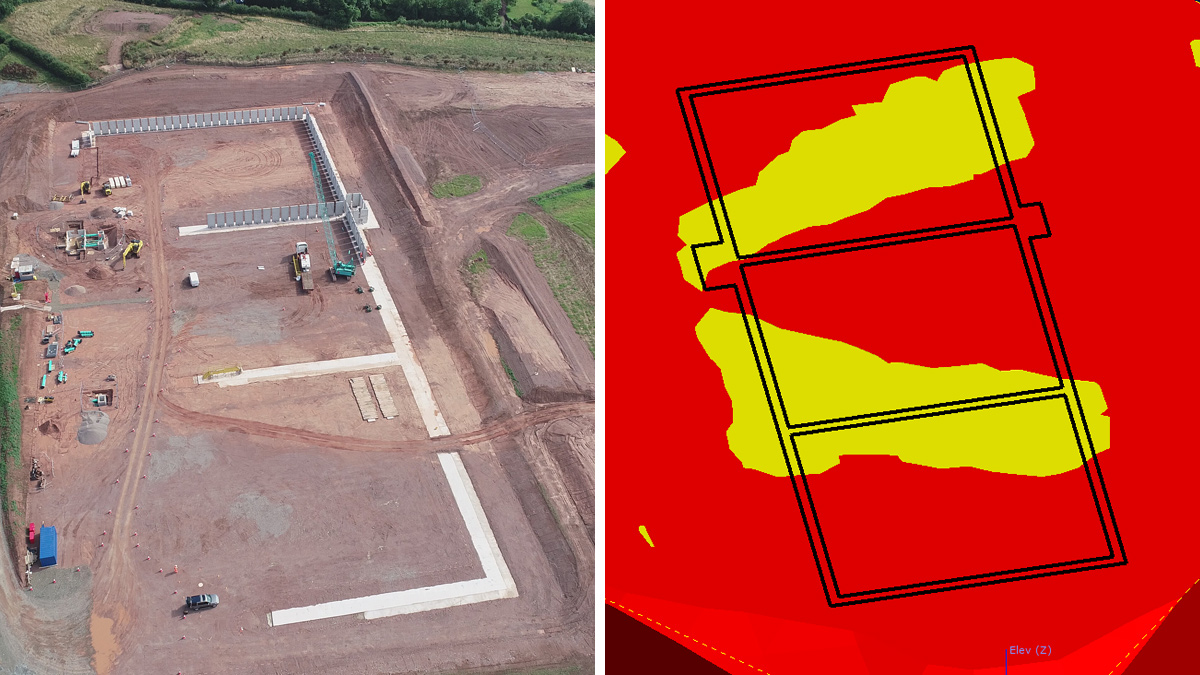
Bands of silt are visible at formation level on the aerial photograph (lighter red/brown colour) and conceptual 3D ground model updated to reflect exact site conditions (silt bands in yellow) – Courtesy of MMB.
Geotechnical and structural design interface
Once the size and location of the new structure was set it was vital to assess and manage the ground risk throughout all stages of the project. The geotechnical investigations identified that the structure would sit across variable ground materials at formation level with silt strata present between sand and gravel deposits. A conceptual 3D ground model was produced and used during detailed design to estimate ground behaviour and settlement. Due to the size and construction type of the proposed SR it is particularly sensitive to differential settlement. Geotechnical and structural design were progressed in tandem and good coordination was required to ensure the variation in ground stiffness across the structure was accounted for within the design.
A detailed geotechnical inspection and test plan was required to verify the design assumptions during the construction phase. Inspection and testing at formation level were undertaken following completion of the earthworks and a settlement monitoring programme has been designed to be implemented during commissioning.
Conclusion
The ‘procurement-based approach’ to the delivery of Bewdley Bank Service Reservoir has ensured increased efficiency of the design and procurement processes by avoiding re-work and using readily available products, and allowed for an acceleration of the on-site programme by minimising the work required on site and maximising the value from the available precast products. MMB will continue to work collaboratively with precast suppliers to further enhance the efficiency of the semi-precast concrete service reservoir product.
As of May 2020, the final precast roof planks are being installed and the new service reservoir is due to be handed over to Welsh Water in early 2021.







